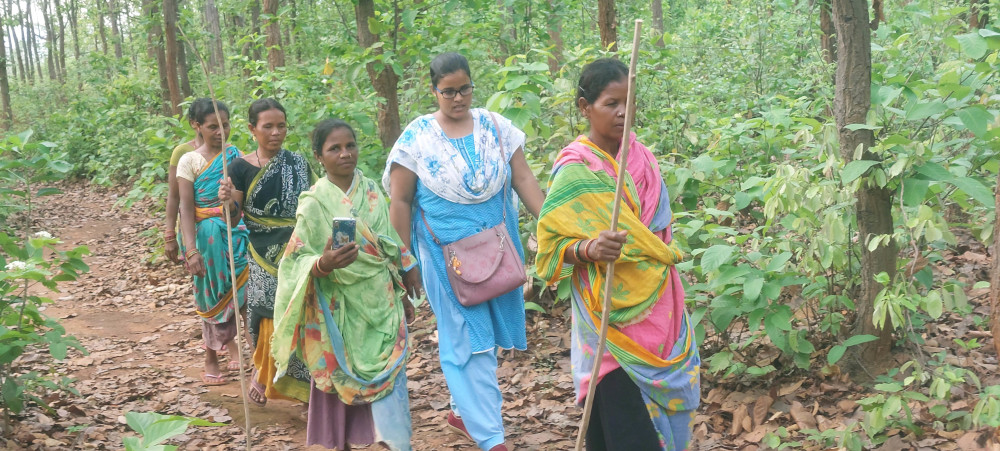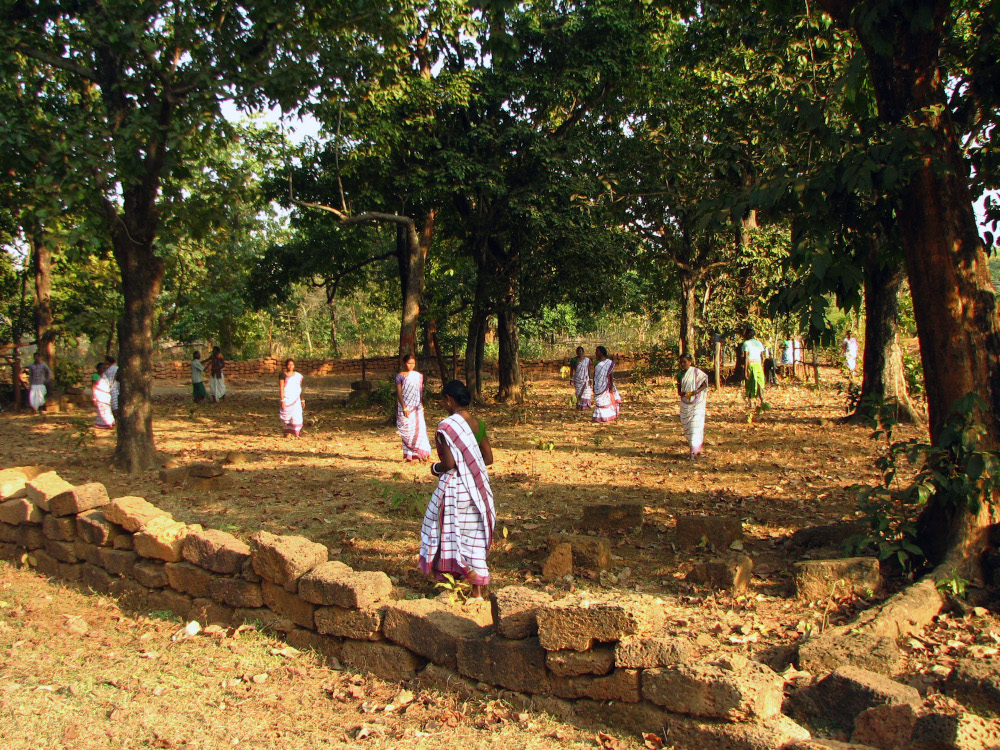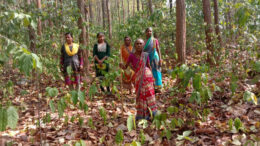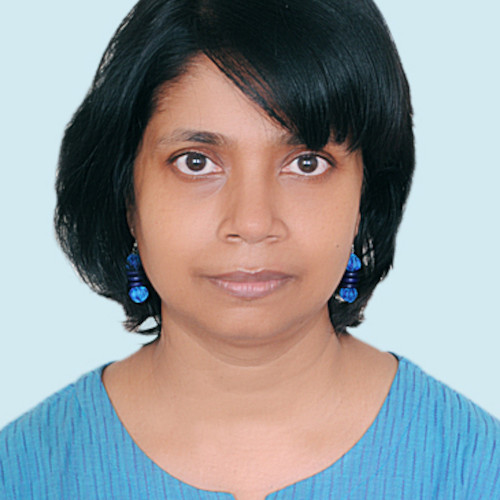Saudamini Mohakud, the 65-year-old elder of her village, proudly calls herself the daughter and bride of the Eastern Ghats, the range of mountains that borders the eastern Indian state of Odisha. The mountains’ undulating wooded hills cradle her native village, Punasia, where she was born and wed. Saudamini says she could not have been happier growing up in its lap of lush greenery, which included about 50 acres of the community forests near her village.
“The forests were then a treasure trove of nature’s bounties, providing us with fruits, vegetables, tubers, medicines, and numerous other resources that sustained our households,” says Saudamini, now a grandmother to four children. “Our sacred grove, dedicated to our village deities, also flourished within these community forests.” The village cattle, too, grazed at the edge of the forest and community pastures.
But in the 1980s the forests began to disappear. The hills turned bare. According to villagers, loggers rampantly smuggled timber. Summers became hotter; dusty winds from the nearby hills hit the village. Rainfall became scarce and erratic. Agriculture, their primary means of livelihood, became uncertain. Depleted forest resources also hit their secondary source of income: collecting seeds, mushrooms, flowers, and other wild plants.
By the 1990s Punasia’s economy was as bare as the nearby hills. “This resulted in migration of men and youths from our village to find work outside,” rues Saudamini.
But over the past two decades, Punasia village has turned that around. A dedicated band of women led by Saudamini have nurtured nearly 50 acres of degraded forest patches and restored them to their former glory.
The formerly depleted forests have regrown with native trees such as sal, siali, mahua, tamarind, mango, and bamboo. Natural water bodies have also been revived with regular rainfall and rising water tables.
“It was hard work” that relied upon their traditional knowledge, recalls Mami Mohakud, now 35 and a member of Saudamini’s team. “We reared the reappearing saplings in the forests, created fences around them, and saved them from grazing cattle.”
Saudamini’s 20-year-old granddaughter, Nirupama, says these protected and restored community commons are an intrinsic part of Punasia’s existence, spiritual, cultural, and ecological heritage, as they are for other Indigenous communities. “They are not just forests or grazing land for us, but deeply connected with our feelings, sustenance, and day-to-day life,” she says.
Community commons also provide many ecosystem services that regulate the local climate, a process seen around the world, according to Sharat Kumar Palita, a professor in the department of biodiversity and conservation of natural resources at Central University of Odisha, Koraput.
“Different kinds of commons — including forest patches, water bodies, and grazing lands — play their respective roles in maintaining favorable microclimatic conditions,” says Palita.
Patches of community forests, he says, reduce heat and local temperature, bring rainfall, and help recharge the water table.
Pastures and grazing lands are also ecosystems on their own, explains Palita. The vegetation provides habitats for diverse pollinating insects such as grasshoppers, butterflies, and bees, and birds such as sparrows. The grass cover, meanwhile, checks rainwater runoff, binds the soil, and, most importantly, provides fodder to the cattle. “All these [benefits] enable the communities to develop a sustainable bond with natural resources,” he says.
Community commons also play an important planetary role by sequestering carbon, a necessary process in a world threatened by climate change. According to FAO’s Global Forest Assessment Report (2020), an average hectare of living forest biomass sequesters 72.6 metric tons of carbon.
But protecting the commons well enough to provide these benefits remains a challenge.
India’s Endangered Commons
Research shows that community commons, which constitute nearly a quarter of the Earth’s land, sustain the livelihood and fulfill the cultural and spiritual needs of Indigenous peoples worldwide. In India common lands constitute nearly 38% of the country’s landmass, spanning 308 million acres that provide critical subsistence and livelihoods for more than 350 million rural people.
Despite their significance, India’s commons have seen a 31-55% decline during the past few decades, in part due to a failure to acknowledge Indigenous practices and skills.
“Though the Indigenous communities have been historically managing and governing the commons for centuries, their time-tested systems are yet to be acknowledged or officially recognized in India,” says Swapnasri Sarangi, the head of gender, diversity, and inclusion at the Foundation for Ecological Security, a pan-Indian nonprofit that has been working with Indigenous communities on conservation and protection of commons and other issues since 2001.
Without any well-defined policy, Sarangi says community common lands are vulnerable to human encroachments and diversion for economic development, such as power projects, roads, industries, constructions, and other threats. The Indigenous communities, who suddenly feel thrown out of their age-old native resources, become impoverished and seldom enjoy the benefits of the “new age” developments. “The conservation and management of community commons is thus a global challenge today,” she says.
But a solution has emerged, and it’s helping villages like Punasia.
Community Mapping
In 2019 the Foundation for Ecological Security developed a mobile application it calls the Common Land Mapping tool, which can identify and demarcate community commons land and shared resources using GPS data. The application allows users to create images and maps of the common land and shared resources, check for encroachment on their territories, and develop collective economic opportunities.
The foundation has trained more than 8,000 community members across Odisha, 30% of whom are women. To date users have mapped an area of 450 square miles (11,7285 hectares). The organization says this work could potentially benefit up to 20,000 villages and millions of people in the state.
In Punasia village, for instance, the mapping tool has helped users to scientifically establish the village’s boundaries so they can protect the forests against unauthorized access. “Today, with sticks in hand, every household in the village regularly patrols and protects our community forest in turns,” says Mami Mohakud. Loggers pose less of a threat now, but the sticks serve as a symbolic gesture that they women are actively monitoring the forests.

The protection has boosted Punasia’s ongoing efforts to restore its forests. Today the villagers are particularly excited to watch herds of migrating elephants pass through the forest patch from the nearby Dalma sanctuary. “Sometimes, they even stay in the forest for a day or two, until the forest department drives them to the nearby Simlipal forests,” says 15-year-old Namita from the village.
The revival of the community worship site within the forest makes her particularly happy. “The forest deity is our mother and ultimate savior of the jungles,” she says. “We do not allow anyone to pluck a single leaf from her sacred site.”
Protecting the Commons, Restoring Culture
“Integrating commons with local culture and traditions is the best way to conserve them,” says Sanjukta Basa, chairperson of Sangram, a state-based nonprofit that has worked with Indigenous communities to conserve forests and wildlife since 1995.
According to Basa, the organization has so far worked in 450 villages in Odisha’s Mayurbhanj district, reviving at least 350 acres of degraded worship sites. Today the dense growth of these sacred patches of forest (an average of 0.5-1 acre each) welcomes animals such as barking deer, sloth bears, jackals, and wild boars. These commons are also places for celebration, where the local communities dance and sing to the rhythm of their traditional drums.

Other communities have taken on their own restoration efforts. In the Koraput district, 30-35 families in the village of Nuaguda have revived about 10 acres of forest cover with various commercial varieties of native plants. They have also collectively restored natural water bodies in their village. The largest of them, with an area of 5 acres, is used by the community to cultivate native fish species such as catla, rohu, prawn, and puntius, among others.
Four other water bodies, each 1.5-2 acres, are used for rainwater harvesting. “During the dry season, we drain out the water from these smaller ponds to cultivate vegetables,” says Kamala Mathapadia, who heads a women-led self-help group in the village that determines the community marketing of fish and vegetables. “We ensure the earnings are distributed equitably among the community members,” she adds.
The weaving community from Kotpad village takes pride in rejuvenating their traditional art of preparing vegetable dyes from plants in their community forests. According to conventional weaver Kunti Mohont, their 20 acres of community forests have plants such as tesu, catechu, annatto, Indian mulberry, shikakai, and harada (chebulic myrobalan). “We use vegetable colors derived from the flowers, roots, barks, or fruits of these plants for long-lasting effects on the fabrics we weave,” she says.
These efforts protect the local ecology while providing value to local communities. According to field research conducted by the Centre for Youth and Social Development, the restoration of commons by the local communities has augmented the livelihood of the village households by at least 20-25% during the past 8-10 years. The organization has worked with Indigenous communities in the state since 1982, empowering them through sustainable livelihoods and conservation of community forests and other commons. According to their records, the effort has so far covered about 21,300 acres (8,617 hectares) in 1,183 villages.
“The correlation between the livelihood of the local communities and the commons is best understood through the positive impacts the latter has on the region’s microclimate,” explains Ashish Jalli, senior project manager at the Centre, who was part of the field research team.
He adds that it has resulted in adequate and timely rains, restored soil fertility, erosion checks, and other accompanying factors that have secured agriculture as the primary source of livelihood for the local communities. In addition, the sale of natural resources such as vegetable dyes, leaves for making containers or plates, wild grass, honey, incense materials, and medicines in local markets are substantially contributing to their secondary sources of income.
The efforts may help sustain the villages in another critical manner, by removing the incentive to leave home and work elsewhere.
“It is rewarding for me to see how the youths are choosing to stay back and work in their native village, thus strengthening the social fabric of their community,” says Jalli.
With these successes already boosting many local commons, efforts to protect the similar territories will continue to expand. Within the next three years, the Foundation for Ecological Security says it plans to extend its outreach to other states in India, including Chhattisgarh, Jharkhand, and Maharashtra. It also expects to expand partnerships with nonprofits and government agencies to enhance the capacities of local communities to identify and strengthen the governance of commons in the country.
The ongoing work will depend on combining traditional knowledge with new technology and high-quality, open source, accessible information. “Strengthening the community knowledge on commons — and adding scientific data — empowers and instills confidence within Indigenous communities,” says Sarangi. “When their skills and knowledge are acknowledged, their capabilities and confidence are also enhanced.”

Previously in The Revelator:
How an Indigenous Scientist Studies Global Change


